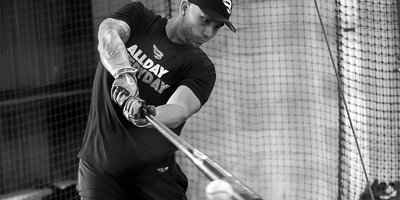Why use training bats in baseball?
Training bats are essential tools for improving your swing and performance at the plate. Their use allows you to target specific aspects of your swing, and they are particularly effective for isolating certain parts and focusing on key areas for improvement.
Hand speed: the key to performance
One of the main reasons players use training bats is to improve hand speed. Hand speed is crucial for understanding and mastering your entire swing. The faster your hands, the more power and bat speed you generate. This also allows you to wait longer before deciding to swing, resulting in better pitch recognition and a greater ability to hit with power and precision.
This increased hand speed can make a huge difference by the end of the season, particularly in terms of home runs. Players seek this speed to maximize their ability to make solid contact with the ball and drive it with force, which could result in a higher number of home runs as the season progresses!
Different types of training bats for different goals
There is a wide variety of training bats, each designed to meet specific needs. By combining them, you can fine-tune every aspect of your swing. Here are some examples of these bats and their uses:
- Two-hand bat: This bat is used to improve hand and arm positioning during the swing. It helps players better understand the recommended hand positioning, which involves keeping the hands close to the body, and refines the overall swing motion. It can be used in combination with heavy or light bats, depending on the need.
- Heavy and light bats: These two types of bats are often used together to work on power and speed. The heavy bat helps develop strength and power in the swing, while the light bat improves hand speed and swing velocity.
- Short bat: The short bat allows players to focus on precision and technique, reducing the margin of error. It is ideal for working on compact and direct swings, which are essential for maximizing contact efficiency with the ball.
- Skinny bat: This bat is designed to improve hand-eye coordination. With a thinner diameter than a regular bat, it forces the player to be more precise in their contact with the ball, which strengthens accuracy and confidence at the plate.
- Flat bat: Designed to prevent rolling over the ball and ensure the swing stays direct. It helps work on a good launch angle to maximize chances of solid contact, optimal ball trajectories, and long drives.
A complete training program thanks to diverse bats
Baseball requires precise control over many technical elements, and each player has specific aspects of their swing to improve. One of the key strengths of training bats is their complementarity. By using several types of bats, you can target specific areas of your swing, whether it’s hand speed, coordination, precision, or power. This blend of training techniques and tools helps build a more complete and effective swing, which will inevitably lead to better performance at the plate.


